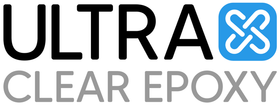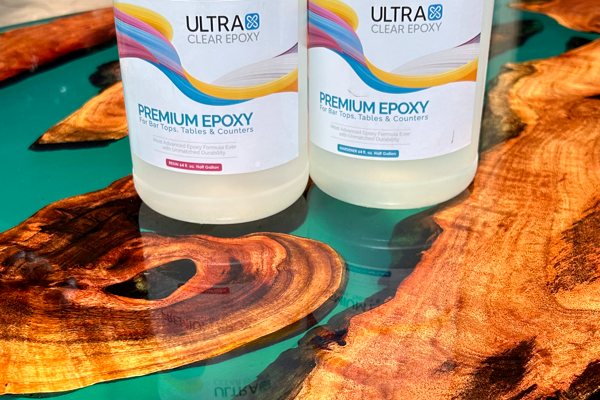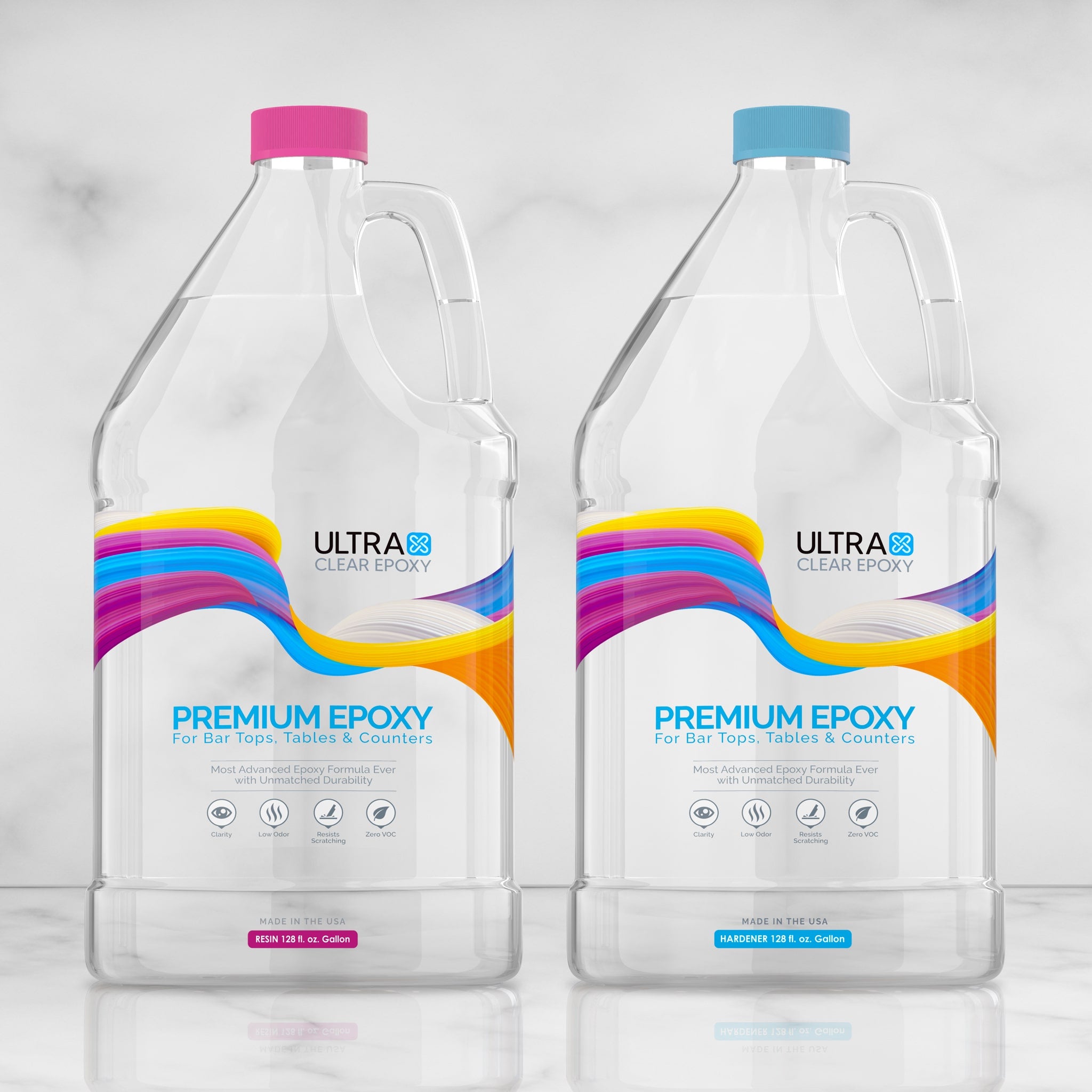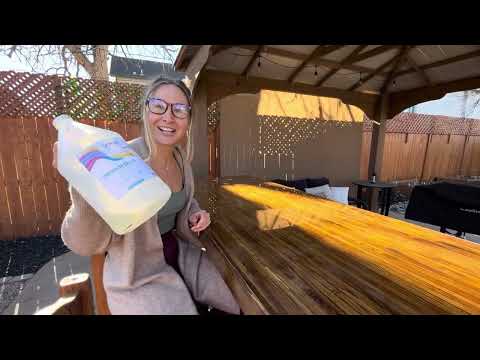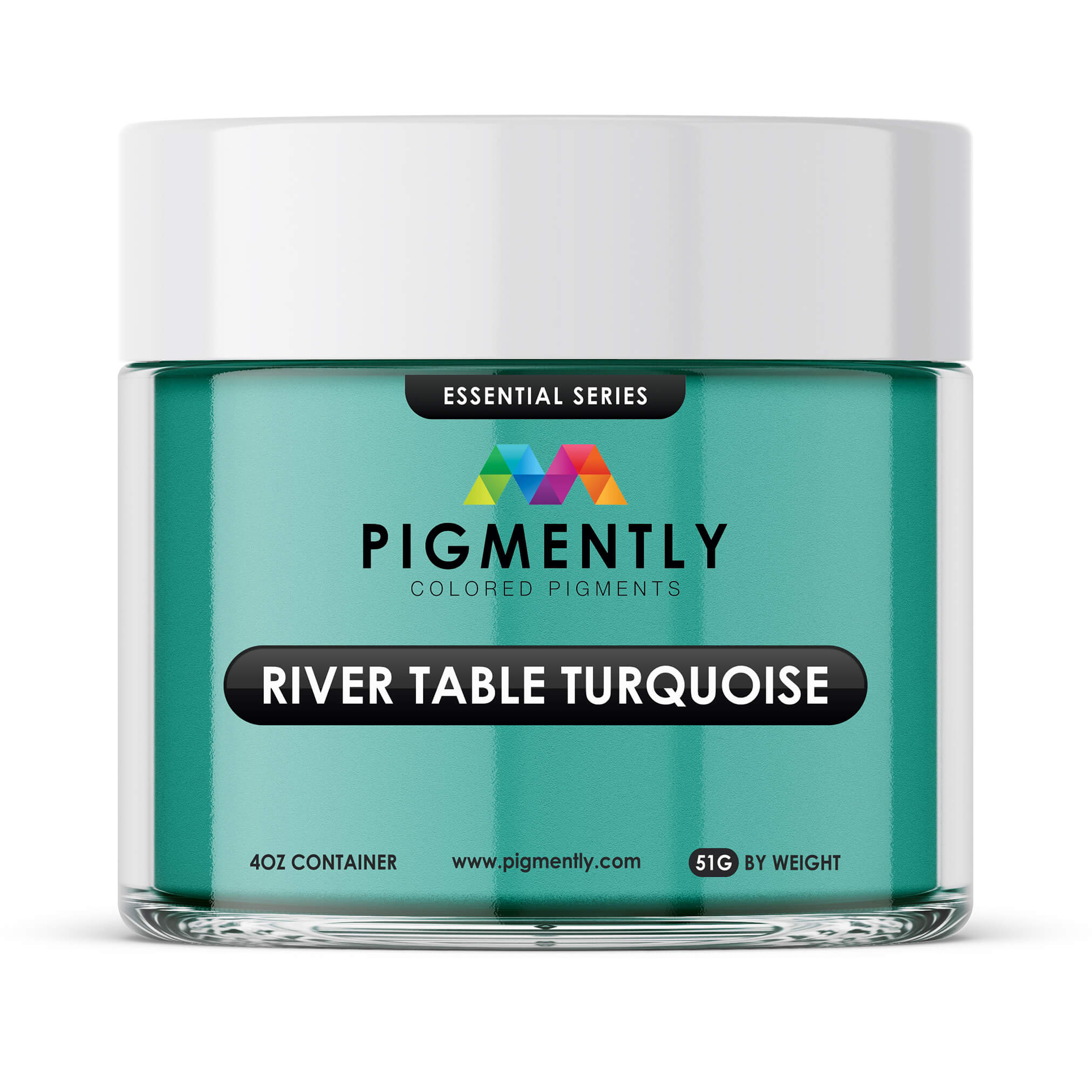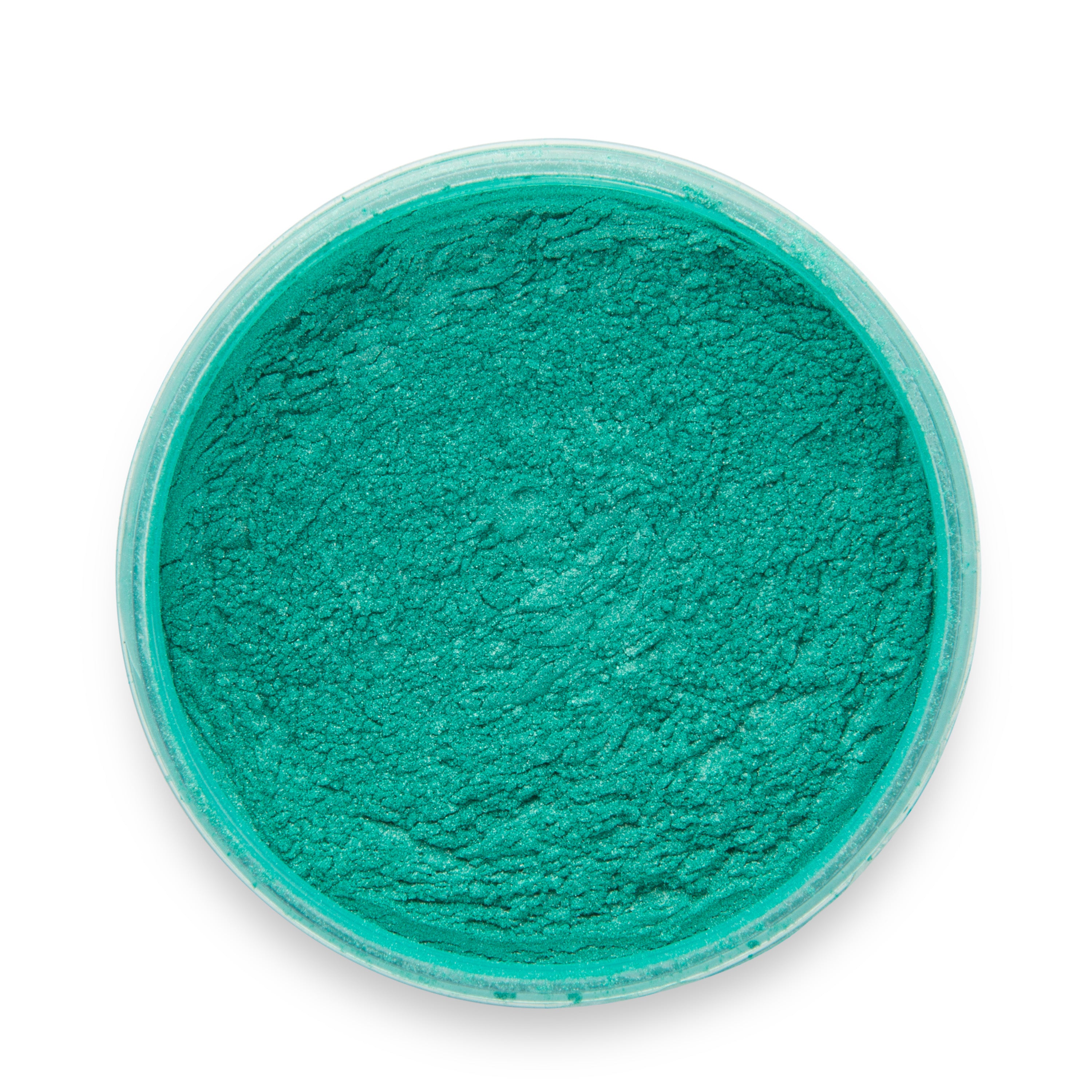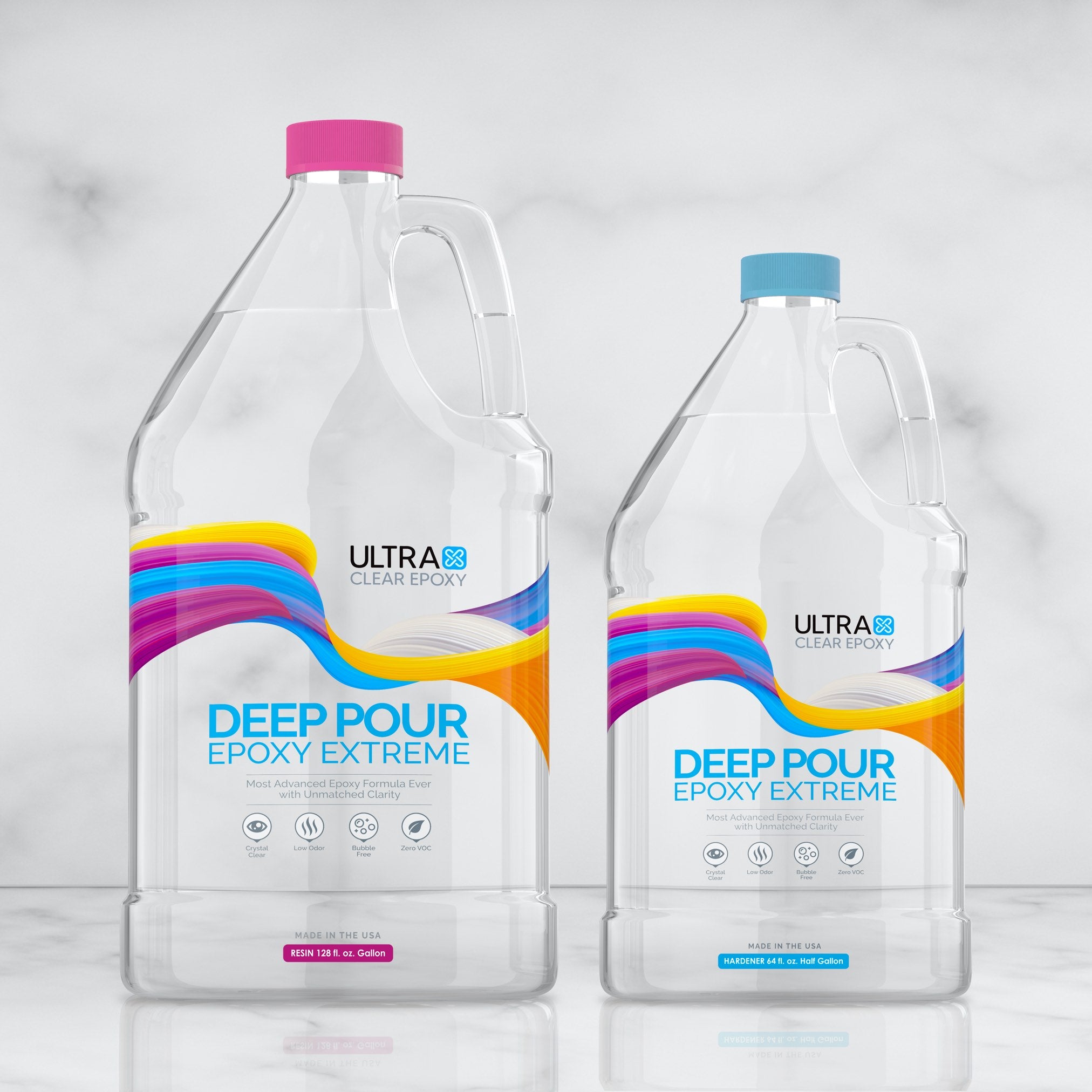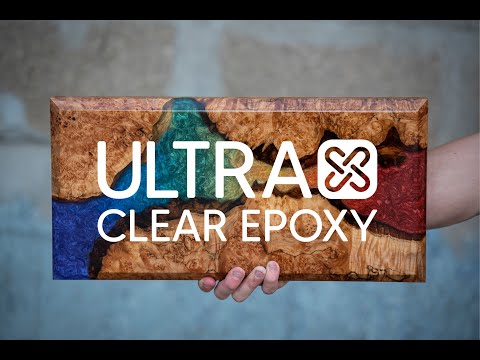One Material, Many Purposes
Epoxy resin may seem like a single product category, but in practice, it comes in several specialized forms—each tailored to meet distinct creative and functional demands.
While all epoxies share certain fundamental properties like strength and clarity, subtle differences in viscosity, cure time, and layer depth make each formula most suitable for a different style of work.
In this guide, we’ll explore the three most prevalent types of craft epoxy: table top epoxy, art epoxy, and deep pour epoxy. We’ll cover what makes each one unique, where it excels, and how to determine which type best matches your project needs.
Comparing the Three Main Types of Craft Resin
Each epoxy resin type has its own chemical formulation optimized for a specific use case. Here’s how they compare:
Table Top Epoxy
UltraClear Bar & Table Top Epoxy is designed for flat surface applications. It's self-leveling, UV-resistant, and cures to a high-gloss, rock-solid finish. Its medium viscosity helps it stay in place during application, which makes it perfect for sealing wood, photos, and artwork. Table top epoxy typically cures in thin layers—around 1/8" at a time.
Art & Craft Epoxy
UltraClear Art & Craft Epoxy offers greater flexibility and color compatibility than table top epoxy. It has a slightly longer working time, allowing for detailed designs, pigment manipulation, and layering. This formula is ideal for colorful resin art, fluid designs, and embedding smaller decorative items. It’s also great for jewelry and crafts where surface hardness isn't as critical as detail and appearance.
Deep Pour Epoxy
UltraClear Deep Pour Epoxy is engineered for thick, large-volume pours—up to 2 inches in a single layer. It’s slower curing, reducing heat generation (exotherm), and flows easily into molds and crevices. It’s essential for river tables, object embeds, and any project requiring seamless depth and clarity, without layer lines. Because of its lower viscosity, it’s not well suited for surface coatings.
Here’s a direct comparison of the three types:
| Feature | Table Top Epoxy | Art Epoxy | Deep Pour Epoxy |
|---|---|---|---|
| Hardness (Once Cured) | Extreme | Very High | High |
| Layer Thickness | ~1/8" per layer | ~1/8" per layer | Up to 2" per layer |
| Viscosity | High | Medium-Low | Low |
| Cure Time | 72 hours | ~24–36 hours | 72 hours* |
| Work Time | 5 minutes | 40 minutes | 30 minutes |
| Self-Leveling | Yes | Yes | No |
| Pigment Compatibility | Good | Excellent | Excellent |
| Best Use | Flat surfaces | Art, jewelry, light crafts | Thick castings, river tables |
| Recommended Product | UltraClear Bar & Table Top Epoxy | UltraClear Art & Craft Epoxy | UltraClear Deep Pour Epoxy |
*Deep Pour Epoxy is safe for light touch after 72 hours, but a full week is recommended before using it as a proper surface.
Table Top Epoxy: Durable and Glossy Protection
UltraClear Bar & Table Top Epoxy is the go-to for anyone creating flat, high-gloss surfaces that can endure heavy daily use. Designed to self-level and form a tough, glass-like surface, it’s most often used in furniture refinishing, bar tops, and photo sealing.
Because it’s thicker and hardens quickly, this epoxy excels at:
-
Sealing wooden coffee tables
-
Coating photographs or printed artwork
-
Creating glossy table tops and countertops
-
Finishing trays, coasters, or signs
Top-Tier Durability
Table top epoxy’s primary strength is durability. Its thicker formula gives it an edge in real-world environments where spills, scratches, and heat are common. UltraClear Bar & Table Top Epoxy, in particular, stands out due to its professional-grade formulation designed for both residential and commercial projects.
Self-Leveling Convenience
Its self-leveling property is especially important when working with wide or irregular surfaces. As the epoxy spreads out, it evens itself to a glossy, uniform layer, making it a user-friendly choice even for first-time users. Unlike thinner epoxies, it holds its form without pooling in corners or dripping over edges too easily when properly applied.
Crystal Clear with a High-Gloss Sheen
Another key advantage is the clarity and shine. After curing, table top epoxy reflects light beautifully, giving the impression of a polished glass surface. It enhances the color and detail of what lies underneath—be it wood grain, photos, or embedded objects. For creative projects like coin tables or logo displays, this clarity and smoothness are essential.
Low-Maintenance and Minimal Upkeep
In terms of maintenance, surfaces coated with table top epoxy are low-effort. A damp cloth is usually all it takes to clean up spills or dust, and its hard, sealed surface means fewer stains and long-term protection. Compared to traditional varnish or polyurethane coatings, the difference in both visual appeal and resilience is dramatic.
An Elegant Aesthetic
Lastly, table top epoxy doesn’t just protect—it elevates. It transforms an ordinary piece of wood into something museum-worthy. And for small businesses crafting serving boards, bar tops, or retail counters, it adds value and professional polish that customers notice.

Art & Craft Epoxy: Color Play and Creative Detail
UltraClear Art & Craft Epoxy is designed for artists who prioritize visual expression and intricate detail over maximum surface hardness. This specialized formula has a slightly lower viscosity than table top resin, allowing pigments and other colorants to move freely and blend with striking fluidity. Its extended working time—longer than that of most standard resins—gives users the flexibility to layer colors, shift designs mid-pour, and produce vivid patterns before the epoxy begins to set.
What distinguishes art epoxy from other types is its responsiveness to additives and the ease with which it can be manipulated to produce unique patterns and effects. Mica powders, resin dyes, alcohol inks, and more all behave more predictably in this formulation. Additionally, the resin's consistency allows for smooth blending and the use of techniques such as lacing, marbling, and blooming.
These characteristics make it the best option for various artistic methods like:
-
Resin painting and pour art, where fluid movement and precision timing are key.
-
Ocean-themed pours and geode effects, which require layering, controlled dispersion, and translucent transitions.
-
Jewelry casting and craft molds, where clarity and color integrity are more important than structural load.
Despite curing to a surprisingly hard finish, art epoxy is not intended for heavy-use surfaces, such as a commercial bar top. It excels in aesthetics rather than abrasion resistance. For this reason, UltraClear Bar & Table Top Epoxy is often the preferable option when a protective outer layer is needed.
In short, UltraClear Art & Craft Epoxy delivers where it counts for visual design: rich color interaction, exceptional clarity, and the kind of slow, even setting that gives creators time to fine-tune their work. For any project where the resin is the artwork, this is the ideal choice.
Deep Pour Epoxy: Depth, Dimension, and Clarity
UltraClear Deep Pour Epoxy is all about creating striking visual depth with high clarity in thick applications. Where standard resins fall short, this formula excels with its ability to handle volume, clarity, and embedded details—all without overheating or forming unwanted layer lines.
Where it excels:
-
Depth: Deep Pour Epoxy can be poured up to 2 inches thick in a single layer, allowing you to create substantial castings or fills without the need for multiple pours. This makes it ideal for river tables, topographic-style designs, and any other project where dimension is a key design element.
-
Dimension: Thanks to its low viscosity, this resin flows effortlessly into complex molds, around objects, and into tight spaces. Whether you're embedding memorabilia, natural elements like stones or leaves, or constructing layered 3D art, Deep Pour Epoxy maintains clean lines and captures intricate detail without bubbles or distortion.
-
Clarity: One of the defining qualities of this resin is its optical clarity. Its crystal-clear finish brings a glass-like transparency that enhances embedded items and colored layers with striking visibility. The slow-curing formula minimizes the risk of clouding, microbubbles, or ambering over time, making it a top choice for display pieces or heirloom-quality projects.
What makes Deep Pour Epoxy distinct:
-
Extended working time (~30 minutes) gives you the flexibility to arrange, adjust, or layer your design elements.
-
Lower exotherm means reduced heat emission, ensuring safe curing even in thick pours, preventing warping or cracking.
-
Its thinner consistency allows for bubble release without aggressive degassing tools.
This resin is not intended for surface coating due to its fluidity and slow set time. Instead, we recommend it for large, dramatic pieces with coloring or with transparency and embedded detail.
How to Choose the Right Epoxy
Not sure which epoxy to choose? Here are a few tips:
-
For flat, functional surfaces (tables, counters, trays): Go with UltraClear Bar & Table Top Epoxy.
-
For colorful or experimental art (coasters, wall art, jewelry): Use UltraClear Art & Craft Epoxy.
-
For deep pours or 3D effects (river tables, embedded designs): Choose UltraClear Deep Pour Epoxy.
-
When in doubt, start small with test pours to ensure compatibility with your materials and intended finish.

When to Combine Epoxy Types
Certain projects benefit from using more than one type of epoxy. For example:
-
A river table may use UltraClear Deep Pour Epoxy to fill the thick river portions of the project, then UltraClear Bar & Table Top Epoxy to finish the surface.
-
Though less common, an art project might use Deep Pour Epoxy for a large pour, then Art & Craft Epoxy for finer details in some areas, and even potentially Bar & Table Top Epoxy as a final hard-coat layer.
Mixing epoxy types allows you to combine strengths—clarity, color compatibility, and surface hardness—based on project demands.

The Risks of Cheap or Imported Epoxy
Over the last several years in online marketplaces, numerous epoxy brands have appeared seemingly out of nowhere. These budget-brand epoxies stand out with surprisingly low prices and are typically offered by dealers with little to no history.
These products are nearly always imported from overseas manufacturers with less stringent quality control, and while the low price of a budget-brand epoxy may be very tempting, these resins come with a hidden cost, as makers of such products sacrifice performance, clarity, and safety to offer them at their upfront cost.
Common results of using budget-brand epoxy include:
- Unpredictable cure times.
- Uneven finishes.
- Substantial yellowing over time.
- Health and safety flaws.
Some budget resins include excessive fillers or unrefined chemicals that can cause excessive odor, skin irritation, or even unsafe fumes during application. These issues aren’t just cosmetic—they can affect your long-term health and the safety of your working space.
Learn more about this issue here.
UltraClear Epoxy: Premium Resins and Extensive Customer Support
With UltraClear Epoxy, you're getting a product that's made in the USA, tested for consistency, and engineered for professional results. Our formulas produce:
-
Crystal-clear, low-maintenance surfaces
-
Excellent pigment compatibility
-
Exceptional durability, with high impact, heat, and chemical resistance.
- A low-upkeep finish, requiring little effort to maintain or clean.
More importantly, you get peace of mind knowing you're working with a resin that's safe, stable, and built to last. Not only that, but every UltraClear Epoxy user gets access to our top-tier customer support, with assistance from resin experts, who can be reached through our Contact Us page.
Our high-grade craft resins can be found on the following pages:
FAQs: Epoxy Types and Best Uses
Question #1: Can I use deep pour epoxy for a thin table top coating?
Technically, yes. However, we recommend against it, as deep pour epoxy lacks the self-leveling quality of Bar & Table Top Epoxy. Deep pour epoxy is meant for thick layers, but to achieve that ability, it loses some of its durability; this means it doesn't cure as strongly, making it less than ideal for thin coatings.
For optimal strength on a thin finish, use Bar & Table Top Epoxy instead.
Question #2: How thick can I pour table top epoxy?
UltraClear Bar & Table Top self-levels to a 1/8 inch thickness. This is its ideal depth per layer. If you need more depth, it's best to apply multiple coats.
Question #3: What’s the difference between art epoxy and table top epoxy?
Art epoxy has a longer working time and is more suited for techniques that involve manipulating the resin to generate patterns or for filling small molds.
Table top epoxy cures harder and is unmatched in its resistance to scratches and wear.
Question #4: Can I color all epoxy types?
Yes, all UltraClear Epoxy resins are highly receptive to colorants such as resin dyes or powder pigments.
For fine detailing, UltraClear Art & Craft Epoxy can be considered the best, more easily allowing for rich, controlled color blends.
Question #5: How do I prevent yellowing over time?
In settings where the epoxy will be exposed to the sun, there is a risk of UV radiation discoloring the epoxy finish. To mitigate this, apply a UV-resistant urethane coating atop the epoxy finish, and avoid prolonged direct sunlight when possible.
Question #6: What epoxy should I use for jewelry?
UltraClear Art & Craft Epoxy is typically the easiest to work with due to its color-friendliness and longer working time compared to table top epoxy for precision pouring.
Question #7: Can I embed objects like coins or shells in epoxy?
Yes—all UltraClear resin types support embedments. Thin items like coins can fit neatly within an UltraClear Bar & Table Top Epoxy layer.
For larger items, you can either layer the table top epoxy or use UltraClear Deep Pour Epoxy for high-depth support, which allows it to fill around objects cleanly without generating excess heat.
Question #8: Is sanding between epoxy layers necessary?
Sanding is usually not needed for additional layers when they're applied 4 to 6 hours after the most recent one.
If the previous layer has cured for more than 10 hours, light sanding is necessary for the next layer to adhere well. Always clean dust before pouring.
Have Questions? Want Advice? We're Here to Help!
If you have any questions about any type of craft resin, or if you'd like assistance in planning an epoxy project, please reach out to us at UltraClear Epoxy—our epoxy experts are ready to assist!
You can contact us via phone or email here. During business hours, you can also text chat online with one of our resin specialists by clicking the Help button at the bottom of your screen.
In our online store, you'll find a variety of useful tools and supplies, ideal for resin projects, plus our award-winning UltraClear Bar & Table Top Epoxy and our UltraClear Deep Pour Epoxy.
UltraClear Epoxy—Trusted by over 1 Million+ Happy Customers
